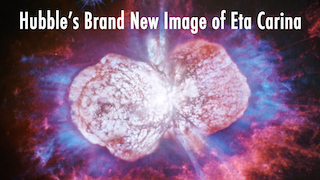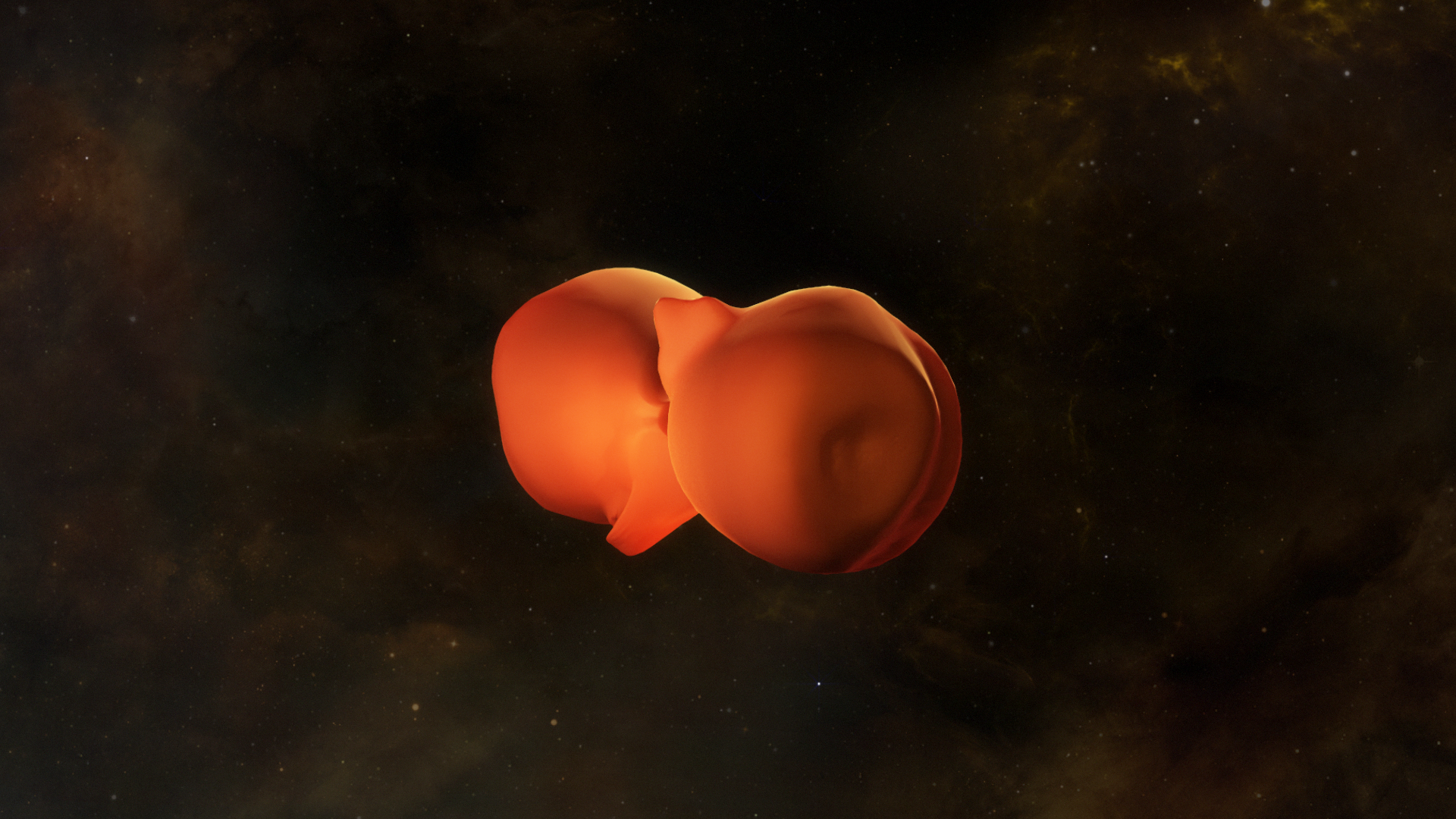Mini Nebula
Eta Carinae lies about 7,500 light-years away in the southern constellation of Carina and is one of the most massive binary star systems in our Milky Way galaxy. In the middle of the 19th century, it underwent an explosion that astronomers call the Great Eruption. As a part of this event, a gaseous shell containing at least 10 and perhaps as much as 40 times the sun's mass was shot into space. Using new observations, astronomers created the first high-resolution 3-D model of the expanding cloud produced by this outburst. The model suggests the twin-lobed dust-filled cloud known as the Homunculus Nebula—which is now about a light-year long and continues to expand at more than 1.3 million mph—was molded by interactions between Eta Carinae's two stars. Watch the video to learn more.

Astronomers use a 3-D printer to model a cosmic eruption.
NASA Goddard astrophysicists discuss how they made a miniature 3-D replica of the nebula and what they learned from the model in this video.

The Homunculus Nebula (above) is a shell of gas and dust that formed due to a stellar outburst in the mid-1800s.

Astronomers imaged the nebula in multiple wavelengths along 92 separate swaths (blue), producing the most complete spectral map to date.

Imaging data was processed using 3-D modeling software to create this rendering that shows never-before-seen details of the nebula's shape.

The European Southern Observatory's Very Large Telescope (above) collected data used to establish the shape of the nebula.
For More Information
See NASA.gov
Credits
Please give credit for this item to:
NASA's Goddard Space Flight Center
Very Large Telescope image courtesy of ESO/G. Hüdepohl
-
Animators
- Brian Monroe (USRA)
- Scott Wiessinger (USRA)
-
Video editor
- Scott Wiessinger (USRA)
-
Producer
- Scott Wiessinger (USRA)
-
Project support
- Aaron E. Lepsch (ADNET Systems, Inc.)
-
Videographer
- Rob Andreoli (Advocates in Manpower Management, Inc.)
-
Writer
- Francis Reddy (Syneren Technologies)
Release date
This page was originally published on Thursday, September 11, 2014.
This page was last updated on Wednesday, May 3, 2023 at 1:50 PM EDT.

